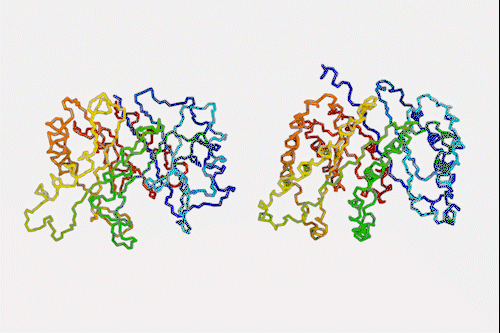Physical chemistry – Page 26
-
 Research
ResearchArtificial synapse built to resist water and organic solvents at last
Network made from e-synapses learns to recognise handwritten-numbers
-
 Research
ResearchIonisation energy of promethium fills one of the last holes in periodic table
Experiment puts an end to 75-year-old mystery
-
 Review
ReviewExhibition: AI: More than Human
The Barbican Centre’s AI: More than Human exhibition explores AI’s origins in history and culture, and delves into the ways the technology is set to change the way we think about intelligence in the future
-
 Opinion
OpinionTaking the k out of kinetics
Even if classic kinetics are correct, that doesn’t mean we can’t fix them
-
 Research
ResearchLaser centrifuge spins out chiral molecules in world first
Experimental proof that molecule’s rotation can be controlled with light could lead to new ways to separate enantiomers
-
 Research
ResearchPhysics behind freezing bubbles’ hypnotic ice crystal dance revealed
Marangoni flow responsible for the often photographed but never studied snow globe effect in freezing soap bubbles
-
 Podcast
PodcastSuperheavy: Making and Breaking the Periodic Table by Kit Chapman – Book club
Kit Chapman explores the strange, complex and downright confusing world of superheavy elements
-
 Research
ResearchStudy ranks interactions between hydrogen-bond acceptors and cations
Experiments establish a set of parameters that will help scientists predict the free energies of the interaction between cations and hydrogen-bond acceptors in any solvent with good reliability
-
 Business
BusinessIndustry adopts quantum computing, qubit by qubit
Companies looking to solve complex chemistry problems are among early adopters of quantum technology
-
 Review
ReviewSuperheavy: Making and Breaking the Periodic Table
Kit Chapman has been on a journey around the world to discover how new elements are made
-
 Opinion
Opinion‘Coffee machine’ synthesiser’s first steps
Cartridge-based machine enables non-experts to make heterocycles
-
 Research
ResearchBond order through a molecular orbital lens
Study computes diatomic bond orders across the periodic table and reveals new bonding insights
-
 Research
ResearchStrange bonds entirely new to chemists predicted in ammonia hydrides
High pressure compound containing bridging hydrogen cations might be found inside Neptune and Uranus
-
 Research
ResearchSpin sensor promises atomic-scale magnetic imaging
Nickelocene-tip scanning tunnelling microscope provides measurements to challenge quantum theory calculations
-
 Research
ResearchQuantum mechanical mechanism behind 100-year-old textbook reaction revealed
Study challenges established understanding of Michael addition as it uncovers Pauli repulsion’s key role in halogen catalysis
-
 Research
ResearchAlgorithm accurately predicts mechanical properties of existing and theoretical MOFs
Machine learning could speed up the production and use of coordination polymers in industry
-
 Business
BusinessFighting fake medicines
RxAll’s handheld scanner assesses drug quality in real time via a smartphone
-
 Research
ResearchBizarre ice XVIII is an oxygen ion crystal swimming in a sea of protons
High pressure superionic form of water may hold clues to behaviour of giant icy planets in our solar system
-
 Opinion
OpinionThe criteria for discovering a new element
Why the rules are changing in the search for superheavies
-
 Research
ResearchNeural network folds proteins a million times faster than its competitors
Machine learning algorithm that predicts protein structures in milliseconds could top next protein folding contest